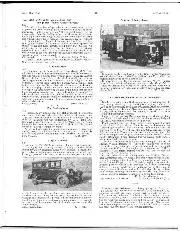
The James Walker Gasket Service
The James Walker Gasket Service Sir, Sir, I feel that a few lines of appreciation of the services of the firm of James Walker of Woking should be published in…
To the victor the spoils, but also – in the case of Toyota and Le Mans – the pain.
The capricious gods of La Sarthe appeared determined to inflict more suffering on the Japanese endurance racing team this season, even as it celebrated back-to-back wins at the famous circuit and secured a share of the World Endurance Championship for its lead driver Fernando Alonso.
In the 87th running of the world’s most famous endurance race, Alonso and co-drivers Sébastien Buemi and Kazuki Nakajima in the number 8 car took the chequered flag after a bizarre pitlane cock-up that robbed the sister entry of almost certain victory. After it had led the race for 23 hours, sensors on the Toyota of Mike Conway, Kamui Kobayashi and José María López detected a puncture on the front right. The car was pitted and the affected wheel changed, then sent out again. But the sensor was inaccurate: it was the rear left that had punctured, necessitating a second stop that allowed the other car to power ahead.
Conway and his crew were distraught. On the podium, Alonso felt moved to say: “I think car 7 was quicker than us for 24 hours; they really deserved the victory but today the luck decided that we have to take the trophy.”
The cruel mix-up will have echoes of the Japanese firm’s heartbreak back in 2016, when its lead car suffered a mechanical failure minutes before the race’s conclusion. That incident, in which the car became stranded at the start/finish line as rivals overtook, has since become a motif for the fickle nature of Le Mans.
In other classes, the Signatech trio of Nicolas Lapierre, Pierre Thiriet and André Negrão won the LMP2 division in their Alpine-branded Oreca, Ferrari scored its first GTE Pro class victory since 2014 with the AF Corse 488 GTE of James Calado, Alessandro Pier Guidi and Daniel Serra and in GTE Am the Project 1 Porsche of Jörg Bergmeister, Egidio Perfetti and Patrick Lindsey was awarded a post-podium victory after Keating Motorsports’ privateer Ford GT was disqualified for refuelling infringements.
Away from the track, the FIA and ACO confirmed the new set of technical regulations for the premier Le Mans class, which will come into effect in 2021. They will herald a so-called Le Mans Hypercar Prototype, designed to entice manufacturers back into the event and the World Endurance Championship. They will be able to enter either hypercar-style prototypes, or develop racing machines based on homologated road-going hypercars with a minimum of 20 units to be produced over a two-year period.
Moments after the regulations were confirmed, Aston Martin announced that it would be joining the fray with a version of its Valkyrie. Toyota also confirmed it would continue to participate in the category and released a teaser film of a hypercar prototype, although without any official details as yet.
American racing car manufacturer Scuderia Cameron Glickenhaus has also declared it will commit to the FIA’s new hypercar category, while McLaren and Ferrari are potential entrants.
